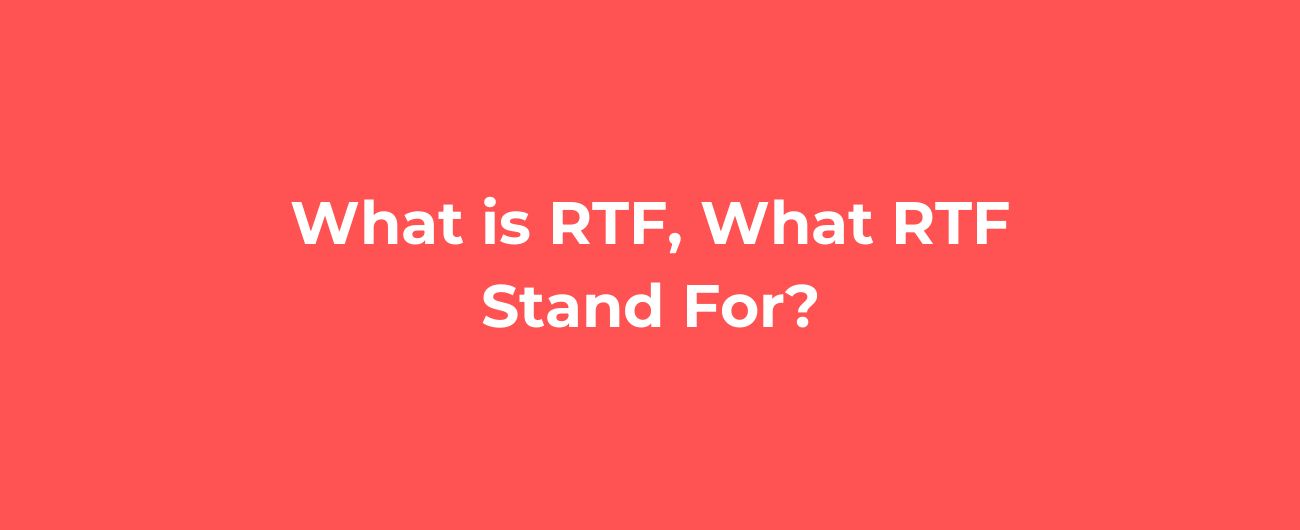
RTF, short for Rich Text Format, is a file format that allows for the exchange of text documents between different word processing applications. It was developed by Microsoft in the 1980s as a universal format that could be read and edited by multiple programs. RTF files are plain text files that can contain formatting, such as bold, italics, underlining, and font styles. They are often used when sharing documents that need to retain their formatting across different platforms and software. In this article, we will explore what RTF stands for, how RTF files work, their benefits, and examples of their usage. RTF stands for Rich Text Format. It is a file format that allows for the exchange of text documents between different word processing applications. RTF files work by using a standardized set of formatting codes that define the appearance of the text. These codes are embedded within the file and are interpreted by word processing software when the file is opened. When an RTF file is opened, the software reads the formatting codes and applies the appropriate formatting to the text. This allows the document to be displayed with the same formatting across different programs and platforms. RTF files are commonly used in various scenarios, including: RTF files can be opened by a wide range of word processing software, including Microsoft Word, Google Docs, LibreOffice, and Apple Pages. No, RTF files are designed to contain only text and basic formatting. They do not support embedded images. RTF files do not have built-in security features. If you need to protect the content of your document, consider using encryption or password protection. Yes, RTF files can be converted to other formats, such as PDF or DOCX, using various conversion tools available online. Yes, RTF files can be opened and viewed on mobile devices using compatible word processing apps. No, RTF files do not support macros or scripts. They are primarily used for basic text formatting. Yes, RTF files can be edited on different operating systems, including Windows, macOS, and Linux. RTF files cannot be directly opened in web browsers. They need to be downloaded and opened in compatible word processing software. RTF files are suitable for long and complex documents as they preserve the formatting and structure of the original document. Yes, RTF files can contain hyperlinks that can be clicked to navigate to a specific web page or document. RTF, or Rich Text Format, is a versatile file format that allows for the exchange of text documents between different word processing applications. It preserves the formatting of the original document and can be opened and edited by various software programs. Whether you need to share documents across different platforms or preserve formatting when sending files, RTF provides a reliable solution. Its compatibility, small file size, and platform independence make it a popular choice for many users. Next time you come across an RTF file, you'll know exactly what it is and how it can be used.What is RTF? | What RTF Stands For
Introduction to RTF
What does RTF stand for?
How do RTF files work?
Benefits of RTF files
Examples of RTF files
FAQs about RTF
1. What programs can open RTF files?
2. Can RTF files contain images?
3. Are RTF files secure?
4. Can RTF files be converted to other formats?
5. Are RTF files compatible with mobile devices?
6. Can RTF files contain macros or scripts?
7. Can RTF files be edited on different operating systems?
8. Can RTF files be opened in web browsers?
9. Are RTF files suitable for long and complex documents?
10. Can RTF files contain hyperlinks?
Conclusion